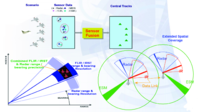
Photo from wikipedia
The fusion of visible and infrared (IR) images is considered as one of the most efficient image fusion methods so far, as more valuable information can be obtained from the… Click to show full abstract
The fusion of visible and infrared (IR) images is considered as one of the most efficient image fusion methods so far, as more valuable information can be obtained from the fused images overcoming the sensor limitations. Even in poor lighting conditions, by utilizing the thermal (IR) radiation information, the details can be obtained from the IR sensors. Visual images provide better spectral, spatial, and texture details. Thus, integrating the IR and visual images will provide more information about an object in a scene, thus enhancing the decision-making process in surveillance applications. The proposed work is aimed to be an object detection framework that utilizes this image fusion technique to identify an object. However, when the query image has more features, the computational complexity for extraction and processing of those features for identification of an object increases. This reduces the detection accuracy of the system. Hence, an optimal set of features ought to be identified before proceeding into the classification and detection processes. To achieve this, the research work has proposed a nature-inspired optimal feature selection methodology using ant colony optimization. Finding the optimal features to reduce the computational complexity and thereby increase the accuracy of detection is the research objective. The fusion of IR and visible images is progressed using pulse-coupled neural network. The rest of the processes such as classification and detection are performed using the convolutional neural network model. Experimental results have been compared with conventional techniques in terms of accuracy and computation time.
Journal Title: Soft Computing
Year Published: 2021
Link to full text (if available)
Share on Social Media: Sign Up to like & get
recommendations!